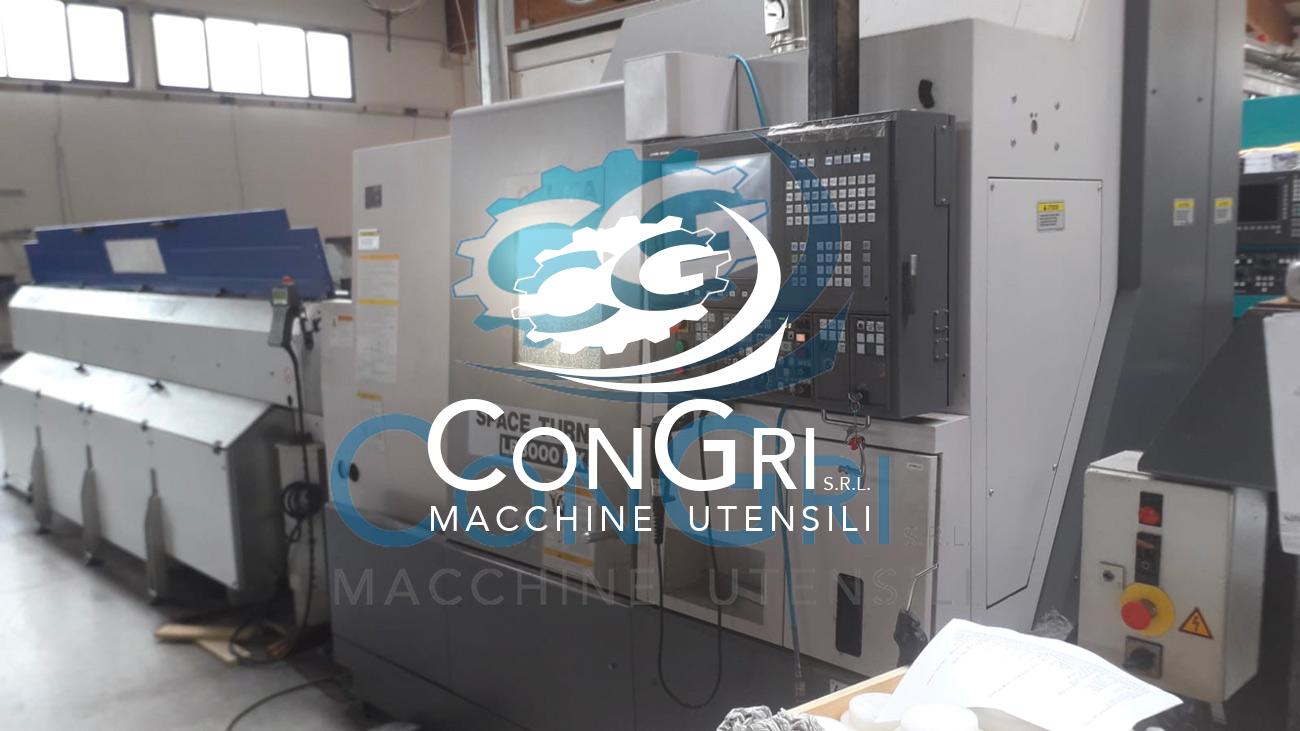3-axis CNC lathe: versatility and simplicity for precision machining
The 3-axis CNC lathe is one of the most widely used solutions in mechanical workshops that seek efficiency and reliability in turning operations. Thanks to its compact structure and precise numerical control, it allows you to perform complex operations in reduced time with excellent repeatability. This type of machine is perfectly suited for working on metals and plastic materials, ensuring consistent performance even in demanding production cycles.
ConGri S.r.l. specializes in the sale of new and reconditioned machine tools, selecting the best CNC lathes on the market, both for those looking for a new system and for those who prefer a fully serviced used machine. Choosing a 3-axis CNC lathe allows you to achieve the ideal balance between quality, cost, and operational simplicity, especially if your goal is to optimize production resources without sacrificing precision. A careful evaluation helps you find the model best suited to your type of machining and the pace of your production.
Differences between a 3-axis CNC lathe and other 2- or 4-axis models
When considering the purchase of a 3-axis CNC lathe, it’s important to understand the differences compared to 2- or 4-axis models so you can choose the machine that best fits your needs. Each configuration offers specific advantages depending on the type of machining, the complexity of the parts, and the level of automation required.
The 2-axis CNC lathe is the most basic version, ideal for standard linear operations such as external turning, drilling, or threading. It’s a cost-effective solution suited for standard production with lower complexity levels. However, when more complex machining is needed, a 2-axis model may become limiting.
The 3-axis CNC lathe adds an extra axis, allowing you to work on transverse planes or slightly more complex shapes without having to reposition the part. It’s a versatile option, capable of delivering higher precision and better control over tool movements.
If, on the other hand, you need to machine multiple sides of a part or combine milling operations, a 4-axis CNC lathe may be a more advanced choice. However, this type of machine requires more complex programming and a higher investment.
Choosing a 3-axis CNC lathe allows you to strike a balance between functionality, cost, and ease of use, especially if you’re looking to boost your production efficiency without adding complexity to operational management.
What to evaluate before purchasing a 3-axis CNC lathe
Before purchasing a 3-axis CNC lathe, you need to carefully analyze various technical and operational aspects to ensure that the machine meets the needs of your production. A well-informed decision helps you avoid unexpected expenses and guarantees reliable performance over time.
The first evaluation should concern the mechanical condition of the lathe. It’s important to check the precision of the axes, the absence of play in the movements, the wear of the guides, and the quality of the spindles. These elements directly affect the machining quality and the machine’s lifespan.
The electronic components also require attention. The numerical control must be functional, intuitive, and preferably upgradable. An outdated software system can limit compatibility with CAD/CAM programs and slow down the entire production process.
You should also verify the brand, year of manufacture, and availability of spare parts. A CNC lathe from a reliable manufacturer ensures greater operational continuity and easier access to technical support. The availability of spare parts and assistance often makes a significant difference.
Finally, consider the reliability of the supplier. A dealer specialized in CNC machine tools, such as ConGri S.r.l., offers warranties, technical documentation, and often refurbishes machines before selling them. Buying from someone who knows the industry protects you from unpleasant surprises and helps you choose the lathe that best suits your production goals.
3-axis CNC lathe, new or used: which one to choose
Choosing between a new or used 3-axis CNC lathe depends on several factors, including your available budget, production needs, and the level of technology required. Both options can be valid, but each comes with specific advantages.
A new CNC lathe gives you access to the latest technologies, updated electronics, and control software that meets current standards. It’s the ideal choice if you work on complex or high-volume productions where absolute precision and operational continuity are essential. Additionally, buying new includes the manufacturer’s full warranty and official support, factors that offer greater peace of mind.
If your goal is to optimize costs without compromising on quality, a used 3-axis CNC lathe is a solid alternative. A reconditioned model, selected and inspected by a specialized dealer, can deliver excellent performance at a more accessible price point. What matters most is verifying the condition of the machine, the installed software, and the availability of spare parts.
ConGri S.r.l. offers both new machines and reconditioned used CNC lathes, ready to be integrated into your workshop with reliability and safety. Carefully evaluating the balance between initial investment and production return helps you make the right decision for your business. Both options, when chosen wisely, can provide long-term efficiency and competitiveness.
How to keep a 3-axis CNC lathe efficient over time
To ensure consistent performance, a 3-axis CNC lathe requires ongoing attention and well-planned maintenance. A preventive approach allows you to reduce the risk of unexpected breakdowns, extend the machine’s service life, and maintain high machining quality.
One of the first aspects to focus on is routine maintenance. Regularly lubricating the guides and spindles reduces friction and prevents premature wear of mechanical components. It’s also important to periodically check for the axes, keep the work area clean, and properly dispose of chips, which can interfere with the machine’s movements.
Updating the control software is another key step. A constantly updated system improves efficiency, increases compatibility with new programming languages, and allows for smoother management of machining operations.
If the lathe is used or has been in service for several years, you might consider a retrofit intervention. Replacing servomotors, updating electronics, or adding new control systems can drastically improve the machine’s performance, bringing it close to the level of a new model.
Finally, relying on qualified technical support and training operators on proper machine use helps prevent operational errors and ensures continuous production. A well-managed 3-axis CNC lathe remains a strategic asset for your workshop over time.
Click here to contact the ConGri S.r.l. team to learn more!

